Quick heads-up: some of the links on this page are affiliate links. If you make a purchase through them, we may earn a small commission (at no extra cost to you). This small bit of income helps keep our site running.
Best Ultralight Tent of 2025
This post was last updated on May 09, 2024.

Going fast and light in the mountains is a way of traveling that we love, and a great ultralight tent is the cornerstone of that. It keeps you dry and happy at night without taking up much room in your bag, and hopefully is roomy enough that you enjoy your night out too.
We've gone for plenty of quick missions in to the mountains to bag a peak and make it out before work on Monday. We've also done multi-day fastpacking trips, done a whole lot of elevation in a day, and even taken our favorite ultralight tents out in to winter storms. The tents below are the ones that have stood up and that we keep going back to.
Our Top Recommendations
Our Top Pick
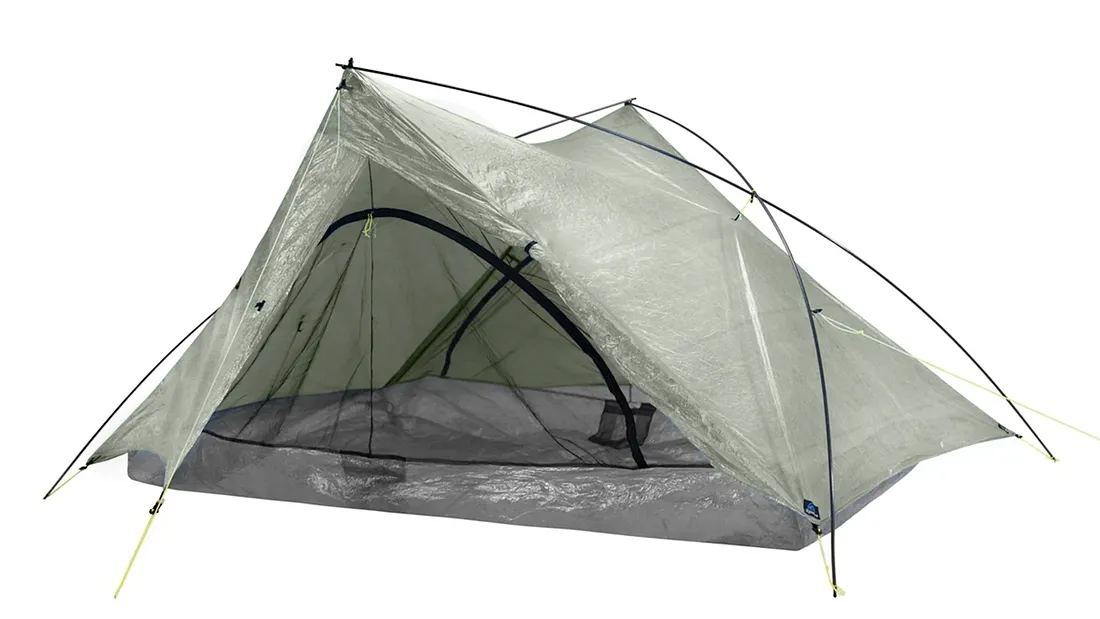
Zpacks Duplex Flex Tent
Ease of Use
Features
Roominess
Weather Resistance
Weight
| Ease of Use |
7
|
| Features |
8
|
| Roominess |
7
|
| Weather Resistance |
6
|
| Weight |
9
|
The Zpacks Duplex Flex Tent takes the top spot due to its feather-light weight loved by backpackers and its incredible durability praised in countless user reviews, coupled with roominess and quick setup that campers simply rave about.
Runner Up #1
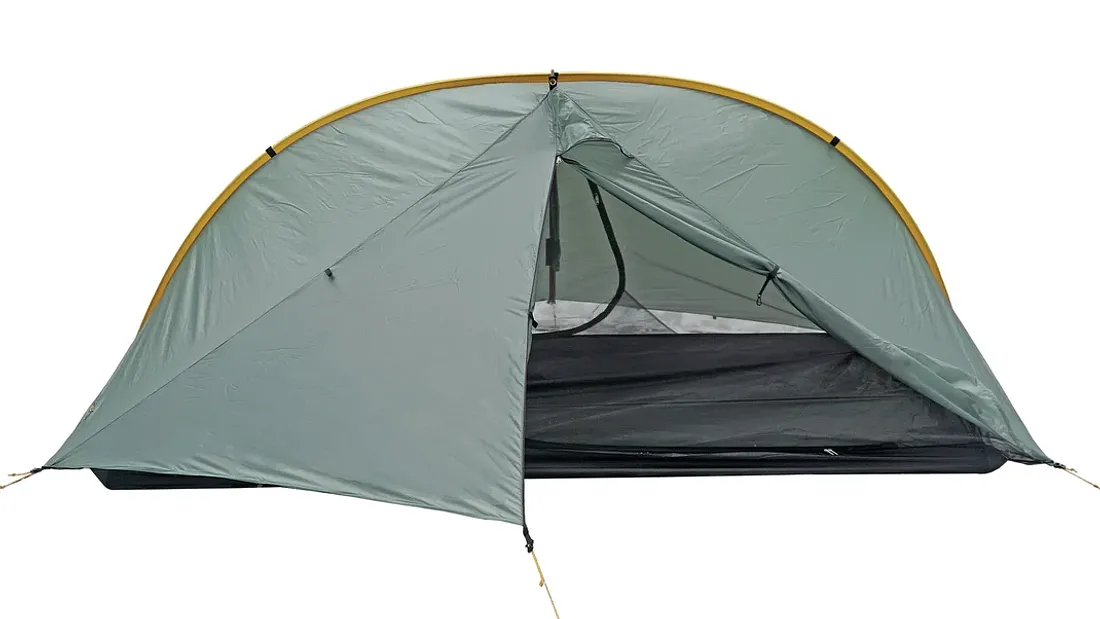
Tarptent Double Rainbow
Ease of Use
Features
Roominess
Weather Resistance
Weight
| Ease of Use |
7
|
| Features |
8
|
| Roominess |
7
|
| Weather Resistance |
7
|
| Weight |
8
|
The Tarptent Double Rainbow scores high on the top pick list because real-world campers and backpackers rave about its exceptional roomy design and surprisingly light pack weight that doesn't skimp on durable weather protection.
Runner Up #2
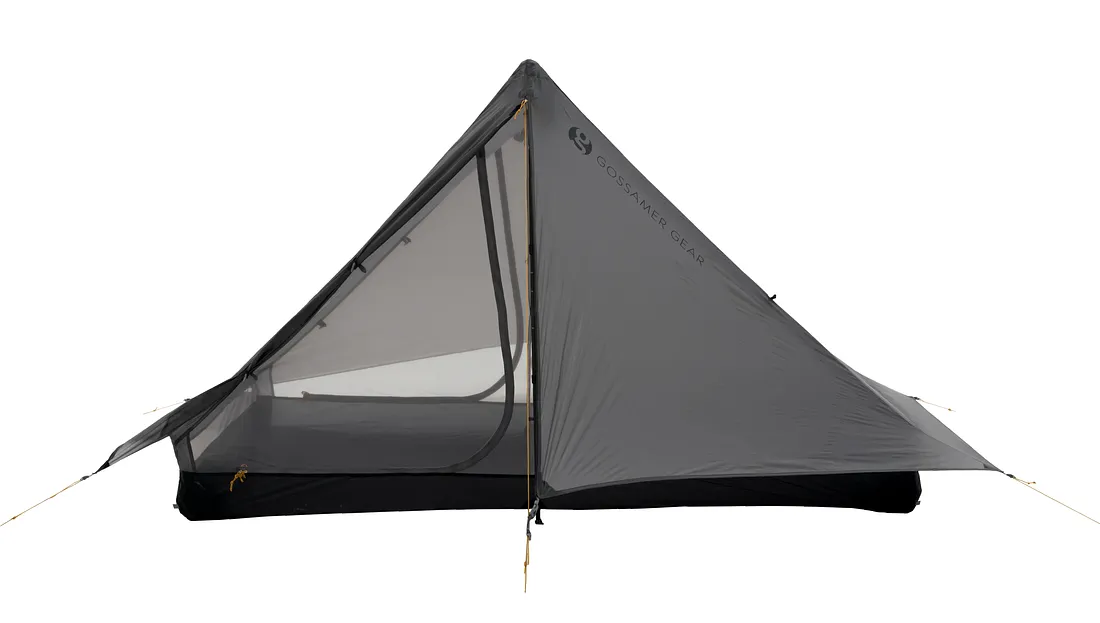
Gossamer Gear The Two
Ease of Use
Features
Roominess
Weather Resistance
Weight
| Ease of Use |
7
|
| Features |
6
|
| Roominess |
5
|
| Weather Resistance |
7
|
| Weight |
8
|
Based on rave reviews, the Gossamer Gear The Two shines as a top pick runner up for ultralight tents, with users falling for its spacious yet lightweight design and the extra headroom it provides, making it stand a cut above the crowd.
What you should look for
(and what we test for)
Durability
Make sure you choose an ultralight tent that's tough enough to withstand the wear-and-tear of your adventures, from unexpected storms to tricky terrains while still remaining lightweight.
Ease of Setup
A day of hiking or climbing is tiring, so opt for a tent that doesn't require a degree in engineering to setup - the quicker and simpler, the better for your energy-saving and overall convenience.
Space and Comfort
Even though you're aiming for lightweight, don't compromise on space or comfort; look for a tent that's spacious enough for you and your gear, breathable, and with a good headroom height.
Weather Resistance
Considering the varying weather conditions you'll encounter on your trips, it's essential your tent can hold up against rain, wind, and possibly even snow, always keeping you dry and cosy inside.
Zpacks Duplex Flex Tent
$669.00The Best Ultralight Tent
Based on our research and testing, we think the Zpacks Duplex Flex Tent is the best Ultralight Tent on the market right now, for anyone looking to play hard outside.

| Ease of Use |
7
|
| Features |
8
|
| Roominess |
7
|
| Weather Resistance |
6
|
| Weight |
9
|
Reasons to Buy
- Excellent weight to space ratio
- Highly durable and weather-resistant
- Competitive price given its impressive features
- Easy and quick to set up
- Good ventilation reducing condensation
Reasons to Avoid
- May not withstand extreme weather conditions
- Zippers could potentially be a weak point
- Offers less privacy due to the semi-transparent material
- Requires trekking poles for setup
If hiking is your life, an ultralight tent like the Zpacks Duplex Flex Tent can be a game-changer. Stripping down weight from your backpack while maintaining the essential features is what this tent is all about. It combines essentials like space, durability, and weather resistance built into a feathery package that makes it hard to resist.
First off, the Duplex Flex Tent is super lightweight. It tips the scales at a remarkable 1.25 lbs, making it one of the lightest tents on the market. This is achieved by their use of extremely light but strong Dyneema Composite Fabric. But just because it's lightweight doesn't mean it’s fragile - in fact, Dyneema fabric is notorious for its toughness despite its light weight, quite like a spider silk of the outdoor gear world.
Set up is a breeze with this tent, thanks to a single-pole structure, a few stakes, and the flex upgrade kit. It’s also free-standing, which means you can pitch it almost anywhere. You might need a little practice, but once you’ve got the hang of it, you’ll be setting it up in minutes, even in the dark.
Space-wise the Duplex offers ample, accommodating two average-sized people comfortably. Not to mention it has a twin vestibule design, meaning you have space for your backpack, shoes, and other gear, keeping your belongings safe from the elements.
But what do users say? Well, many of them rave about its innovative design and the excellent using experience. One customer praised the tent’s space, being impressed by the room it provides for two people, emphasizing this tent isn't compromising on comfort, despite its ultra lightweight nature. Another client applauded it for its hardiness in windy conditions and its easily adjustable guy-lines.
The tent isn’t completely without criticism. Some users noted that in heavy rain situations, there is a chance of water seeping in, mostly due to the single-walled design. This tent may not be perfect for every weather condition, but it seems most agree the positives far outweigh the occasional bout of bad weather.
The price point, while higher than most, has been judged worth the splurge by users. They believe the lightness, strength, ease of use, and durability are things worth paying more for. One user even claimed it's the best outdoor gear they ever purchased!
Tarptent Double Rainbow
$299.00Runner Up
Based on our research and testing, we think the Tarptent Double Rainbow is a great choice if you're looking for a ultralight tent to go play hard outside with, if our top pick isn't quite what you're looking for.

| Ease of Use |
7
|
| Features |
8
|
| Roominess |
7
|
| Weather Resistance |
7
|
| Weight |
8
|
Reasons to Buy
- Exceptionally spacious
- Simple and speedy assembly
- Impressive weather resistance
- Great ventilation capabilities
- Good value for money
Reasons to Avoid
- Trekking poles needed for freestanding mode
- Condensation buildup in high humidity
- Not ideal for cold winter seasons
The Tarptent Double Rainbow definitely pulls its weight in the world of ultralight tents. Weighing in at a mere 41 ounces, this two-person tent is the camping companion you've been looking for.
First things first, this tent is a breeze to setup. Even if you're tired after a long day's hike, the single-pole structure ensures you'll have your shelter ready in no time.
Notable too is the versatility the Tarptent Double Rainbow offers. A common praise among buyers online is its convertibility into a free-standing tent. This is a major plus if you're dealing with terrains where staking is not an option.
Space is something this tent doesn't skimp on. Users repeatedly mention the roomy interior, happily fitting two occupants without feeling squished. Moreover, the twin vestibules and mesh pockets provide ample storage, which, as any seasoned camper would know, is always a bonus.
Buyers love the dual doors and views they afford. Waking up to nature at all angles - without leaving the comfort of your sleeping bag - is definitely a winner.
The weather resistance of Tarptent Double Rainbow has been remarked upon by multiple users. The silicone-coated nylon fabric works well in holding up against rain while the additional clip-on liner improves condensation management, a feature appreciated by many campers dealing with colder climates.
However, a few online reviews did point out that in high winds, the tent's stability can be a bit compromised due to its high profile. These comments were sparse, however, and for the most part, it fared well in varied weather conditions.
One other thing that stood out in customer reviews was its value for money. For its durability and features, people find this product definitely worth the splurge.
Gossamer Gear The Two
$446.00Runner Up
Based on our research and testing, we think the Gossamer Gear The Two is a great choice if you're looking for a ultralight tent to go play hard outside with, if our top pick isn't quite what you're looking for.

| Ease of Use |
7
|
| Features |
6
|
| Roominess |
5
|
| Weather Resistance |
7
|
| Weight |
8
|
Reasons to Buy
- Extremely lightweight
- Offers ample living space
- Easy to set up
- Superior ventilation
- Highly packable
Reasons to Avoid
- Not ideal for harsh weather
- Durability could be improved
- Pricey
The Gossamer Gear The Two is all about mixing two seemingly contrasting features, roominess and a feather-light structure. Weighing a mere 1.3 pounds, this tent manages to provide an ample living space without adding unnecessary weight to your backpack.
To start off, its spacious interior is something to point out. It measures 7.5 feet long and 4 feet wide, proving to be an adequate shelter for two adults. Indeed many users have complimented its interior space, especially its 45” peak height which allows for comfortable sitting up and movement inside the tent.
An impressive feature that most users rave about is the tent’s dual entry and dual vestibules design. This neat little feature offers space for gear storage and also allows for easy access in and out without having to step over your tentmate.
However, some buyers have shown concern over the setup process, mentioning that it can be a bit tricky and time-consuming. The tent is not freestanding, requiring two trekking poles for support - this could be a turn-off for some.
The durability of The Two also receives mixed reviews. With its lightweight design, some compromises had to be made. While the 10D sil-nylon material is waterproof and capable of withstanding moderate weather, some users have found it isn't the most durable when exposed to rough surfaces or extreme weather.
Finally, ventilation is yet another feature worth noting with this tent. Numerous reviews talk of the great ventilation provided by the fine No-See-Um mesh, substantially reducing condensation inside the tent, a commonly irksome trait with many other ultralight tents on the market.
Durston X-Mid 2P Gen 2
$639.00Best Budget Ultralight Tent
Based on our research and testing, we think the Durston X-Mid 2P Gen 2 is a great pick if you're looking for a ultralight tent that is more budget friendly, without sacrificing too much in quality.
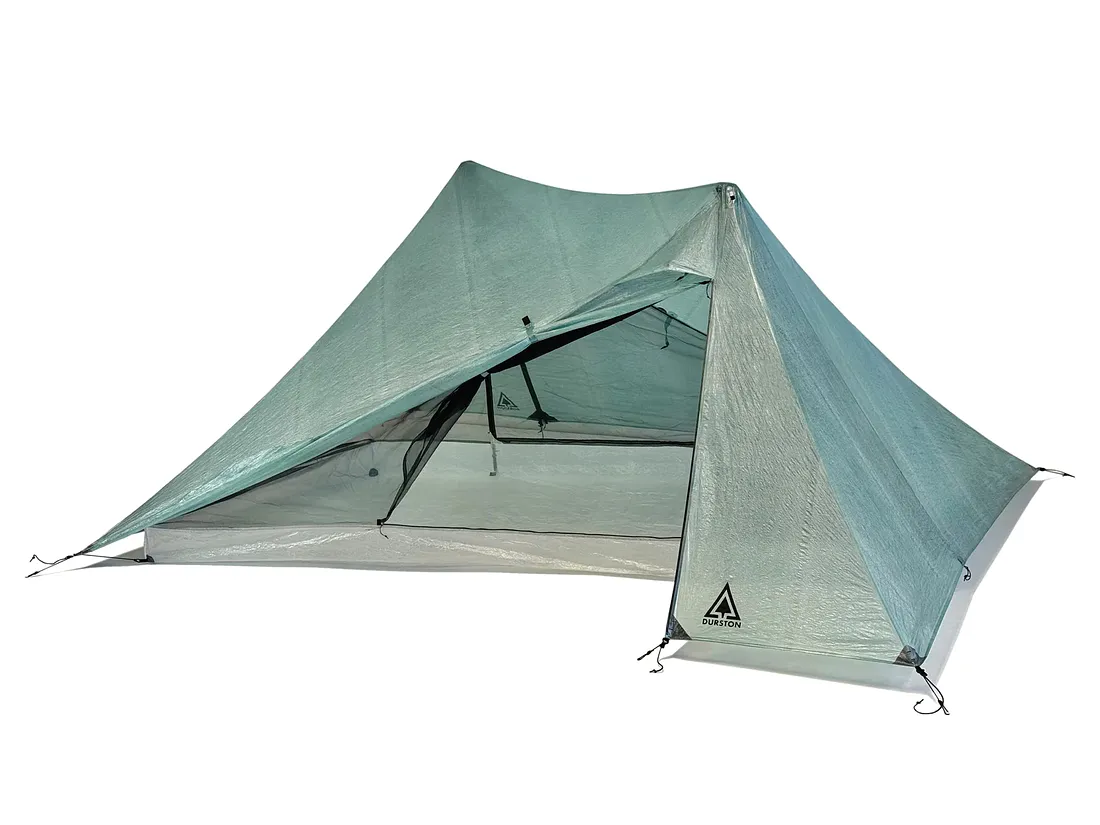
| Features |
6
|
| Roominess |
7
|
| Weight |
8
|
Reasons to Buy
- Affordable cost for its features
- Spacious interior for 2 people
- Easy to set up
- Robust material and construct
- Reliable in different weather conditions
Reasons to Avoid
- May not be suitable for very harsh weather conditions
- Some users find it bulkier than other ultralight options
- Lack of inner pockets for organization
The Durston X-Mid 2P Gen 2 has quickly garnered a solid reputation as one of the most reliable budget and ultralight tents on the market - a hit among budget-conscious campers and backpackers. Not only does it boast a low weight, but it also impresses with its functionality and suitable design.
Packed with features and thoughtful elements, it's intelligently designed. The double-wall design and dual doors are particularly noteworthy, offering excellent ventilation and accessibility. The inner and outer tents can be pitched separately, providing flexibility depending on your needs, either for backpacking or camping.
The X-Mid 2P Gen 2 makes it incredibly easy to set up - it's designed to be pitched with two trekking poles, perfect for those who already use them on their adventures. This feature helps lighten the weight you carry, as there's no need for separate tent poles.
Next on the list of awesome qualities is that this tent is capacious. Despite its compact, ultralight nature, it manages to offer a surprisingly spacious interior, an aspect remarked upon by many owners. This makes it ideal for two users, and even solo campers who enjoy extra space.
Made from 20D 420T Ripstop Polyester, the tent's fabric holds up well in various weather conditions. However, some users noted that while it's waterproof and decently robust, it may not be the best equipped when faced with extreme weather or very windy conditions. It's definitely worth having extra guy-lines and stakes handy if you're going to be camping in windier or storm-prone areas.
It's not all perfect though, some users found that condensation can be an issue in colder weather. Whilst the double-wall design works well for ventilation in general, in colder temperatures and humid conditions, some campers reported that condensation would build up inside.
Other minor gripes include wishing for more internal storage pockets, and a few users found the unique X-mid design a bit tricky to pitch at first, but noted it was quick to master after a few tries.
Overall, the Durston X-Mid 2P Gen 2 is a commendable option for those who seek a lightweight, reliable tent without having to dig too deep into their pockets. From its impressive efficiency in weight to its spaciousness and functionality, it certainly gives more expensive ultralight tents a run for their money.
Hyperlite Mountain Gear UltaMid 2
$699.00Best Ultralight Tent for Four Season / Winter
Based on our research and testing, we think the Hyperlite Mountain Gear UltaMid 2 is a solid choice if you want a ultralight tent that's really well suited to Four Season / Winter.
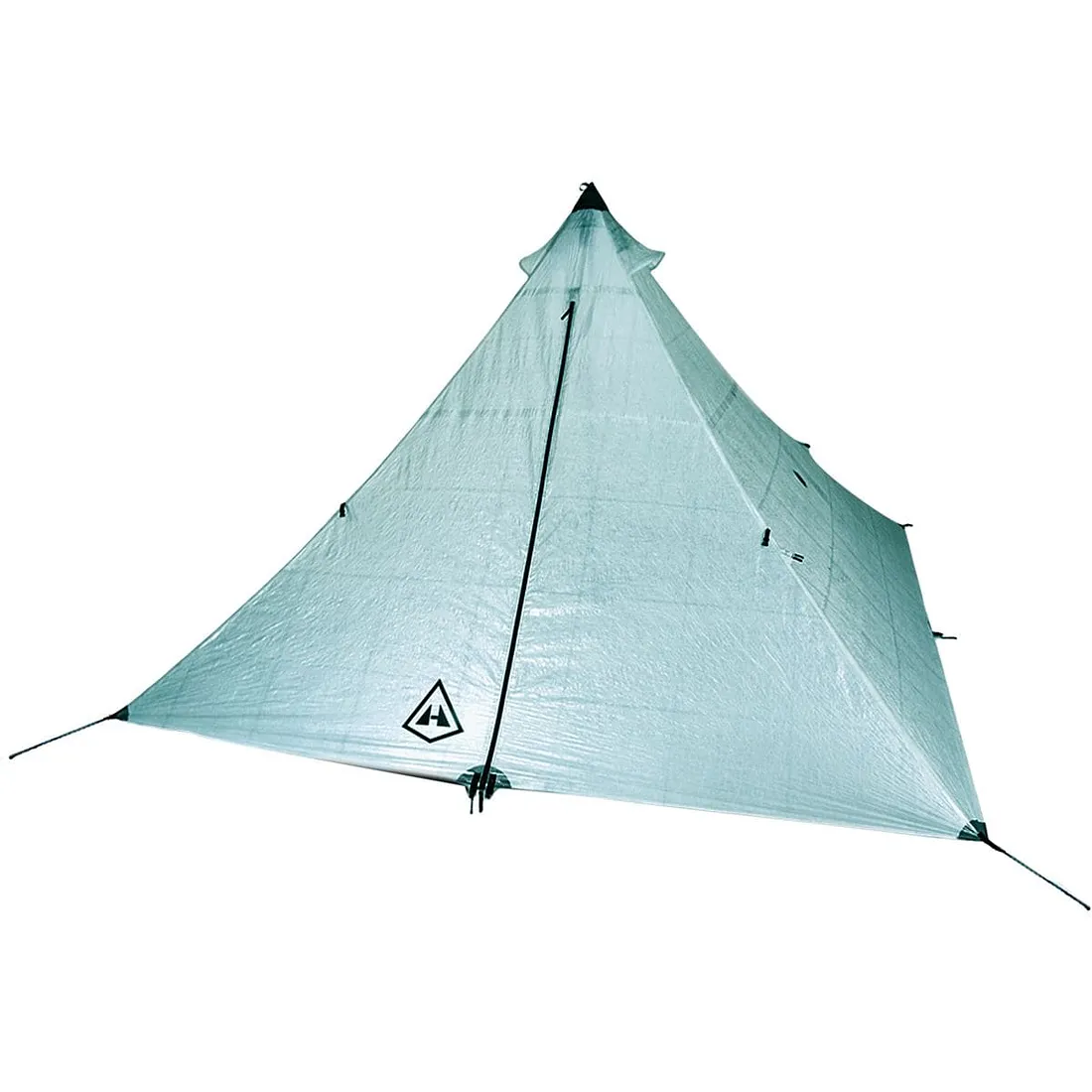
| Ease of Use |
7
|
| Features |
6
|
| Roominess |
8
|
| Weather Resistance |
8
|
| Weight |
8
|
Reasons to Buy
- Superior materials and craftsmanship for top-notch durability
- Hold up incredibly well in winter conditions
- Easy to set up with a bit of practice
- Offers great ventilation minimizing condensation
- Spacious interior for a comfortable sleep
Reasons to Avoid
- Slightly on the pricey side
- Pole and floor have to be purchased separately
- Ventilation can be an issue during extreme weather
- Not the easiest to set up for beginners
If you're a serious hiker looking for a reliable four-season tent, the Hyperlite Mountain Gear UltaMid 2 is a phenomenal choice. Lightweight yet sturdy, this tent is designed to hold its own in challenging weather conditions.
One thing that immediately stands out is the pyramid design. The steep, four-sided pyramid structure helps shed wind while maximizing interior space, a great combination for winter camping.
The tent's material, Dyneema® Composite Fabric, is renowned for strength and durability. It's impressively tough and can take a beating; several reviewers mentioned enduring heavy snowfall and high winds without compromising the tent's integrity.
Weighing just around 18.85 ounces, the UltaMid 2 is genuinely ultralight. Buyers were pleasantly surprised with how easy it was to carry around on long excursions. They were equally as impressed with the spacious interior, plenty of room for two and gear.
Setting up the UltaMid 2 is a straightforward affair. Some users did point out that it takes some getting used to as the tent requires a center pole (not included) for structure. However, once you get the hang of it, the setup is quick and efficient.
The tent's ventilation is another point of praise. The UltaMid 2 is designed with strategically placed vents to reduce condensation, a detail that many campers found incredibly useful in cold, damp conditions.
One consistent piece of criticism from buyers was the absence of a sewn-in floor. Though this does reduce overall tent weight, it could be inconvenient in wet or snowy conditions. Many users suggested purchasing the UltaMid 2 Insert for added protection.
Lastly, the UltaMid 2 is on the pricier side. This high-quality tent is a significant investment. Positive reviews often highlight that if you're frequently in challenging conditions and prioritize lightness and durability, the UltaMid 2 is well worth the investment.
Prices
Tarptent StratoSpire Li
$659.00Best Ultralight Tent for Two-wall
Based on our research and testing, we think the Tarptent StratoSpire Li is a solid choice if you want a ultralight tent that's really well suited to Two-wall.
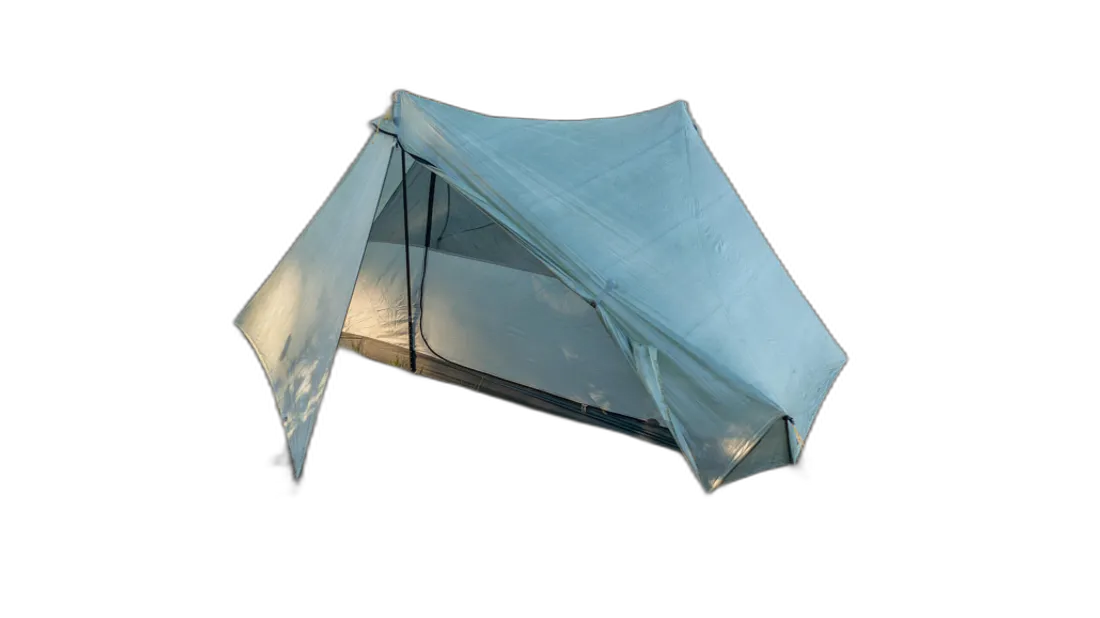
| Ease of Use |
7
|
| Features |
9
|
| Roominess |
8
|
| Weather Resistance |
8
|
| Weight |
8
|
Reasons to Buy
- Durable and resistant to different weather conditions
- Spacious interior for comfortable camping
- Easy to set up even for beginners
- Lightweight without scrimping on quality
- Good ventilation, reduces condensation inside tent
Reasons to Avoid
- Higher end of the price spectrum for ultralight tents
- Execution of the two-door design could be improved
- Not the best option for rough terrains
The Tarptent StratoSpire Li is one hell of a tent for hardcore hikers looking to escape the weight of traditional two-wall tents. This tent doesn't leave you wrestling with a clunky setup process. It's incredibly easy to put up, so you can get to lounging in record time.
Weight is a significant consideration for any backpacking trip, and the Tarptent StratoSpire Li shines in this regard. It's ultralight, yet it doesn't sacrifice sturdiness for this lighter weight. Unlike some ultralight tents, the StratoSpire Li is built to withstand high winds and inclement weather conditions, a saviour when you're caught in that unexpected downpour.
The techy Dyneema Composite Fabric enhances this tent's durability, ensuring the equipment lasts hike after hike. The waterproofing does an excellent job too, saving you from those dreaded late-night leaks.
Stringing this tent between two trees for extra roominess will make you feel like you brought a mini-house on your adventure. With its two-wall design and double doors, it's airy, spacious and all about maximizing comfort.
Take note though, the StratoSpire Li doesn't come with poles. So, if you’re used to traditional tent setups, you’ll need to bring your own or use trekking poles. While some may see this as a downside, real outdoors enthusiasts often carry trekking poles anyways, turning this into a non-issue.
One hiccup with the design: the gap between the tent floor and the rainfly can sometimes let in a bit of the cold if you're camping in harsh conditions. So consider your environment carefully and plan for extra insulation if needed.
Buyers have dropped glowing reviews for the StratoSpire Li. Many appreciate its marriage of lightweight design with durability and weather resistance. The word of the day is 'versatility', as this tent holds up in a variety of environments, from desert landscapes to rainy mountains. Some users did mention the lack of poles and the potential chill factor, but overall, there was a resounding feeling that these were minor trade-offs for an otherwise top-notch product.
Related Posts

For those windy, stormy, snowy days when most people are looking to stay in doors, the adventurous people are headed outside with their 4 season tent. A little bad weather should never stop you...
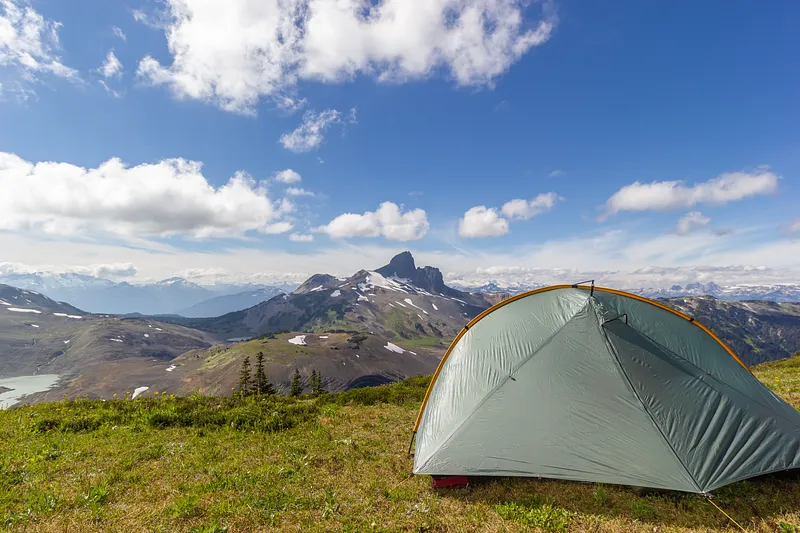
If you're a seasoned outdoors enthusiast or just a weekend camper, you'd probably agree that a small item can make or break your outdoor adventure - Tent Stakes. Yep, you heard that right, these...
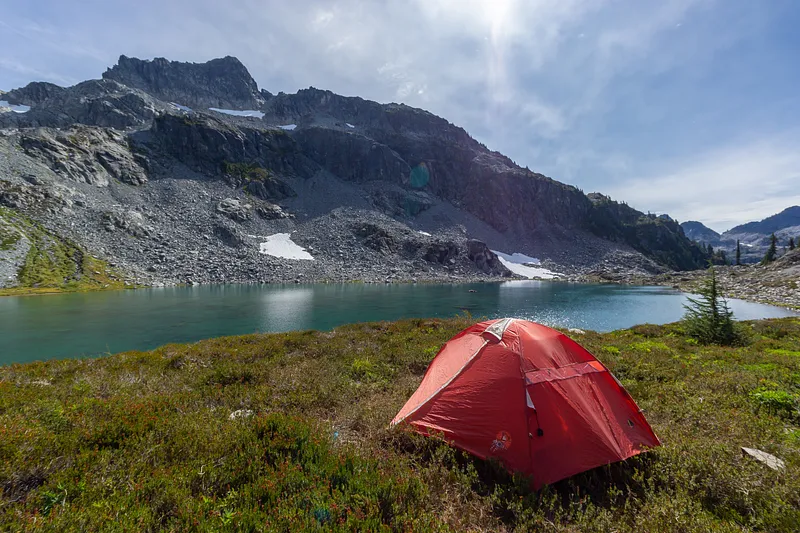
Attention to all outdoor adventurers, it is time to ready your gear for your next backpacking trip, and we are here to guide you in one of the crucial choices: a sleeping bag. Unarguably, the...
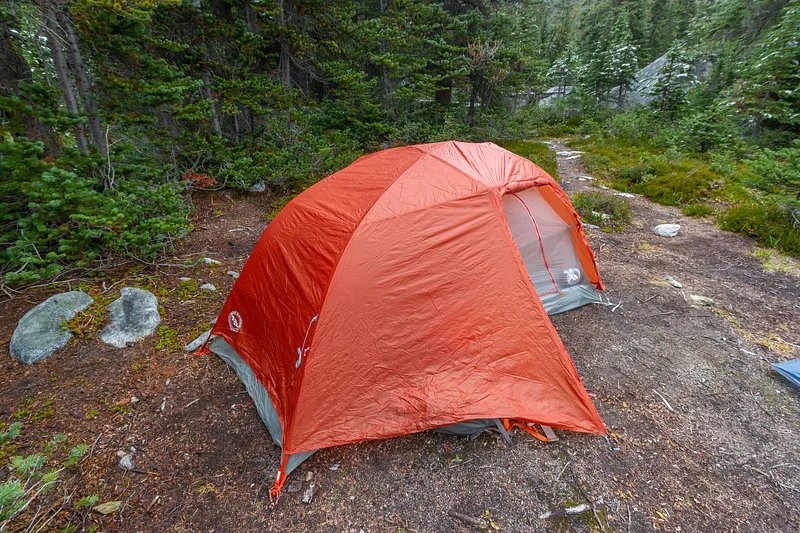
A good camping tent can really make the difference between an enjoyable camping trip and leaving the campsite at 2 AM because you just can't take another minute.
To test out camping tents we've...
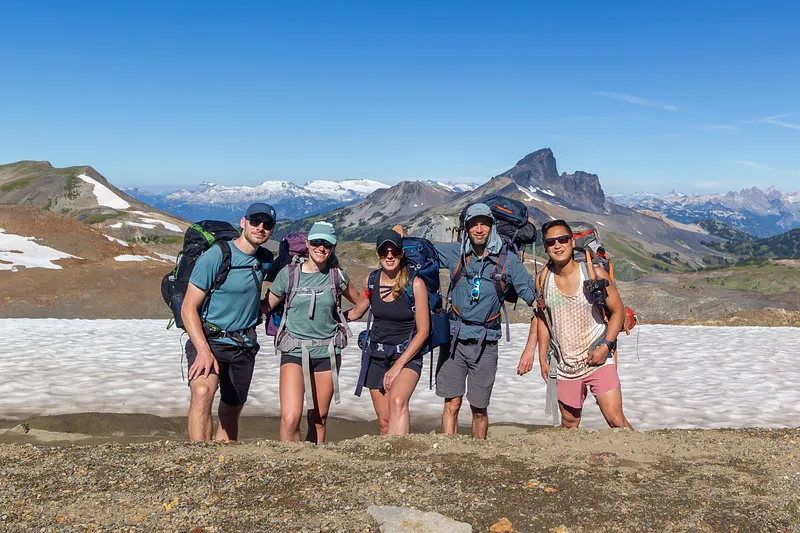
We really like a good ultralight adventure, and having a good ultralight backpack makes a lot of that possible. Finding the perfect balance of lightweight with enough structure and capacity is not...
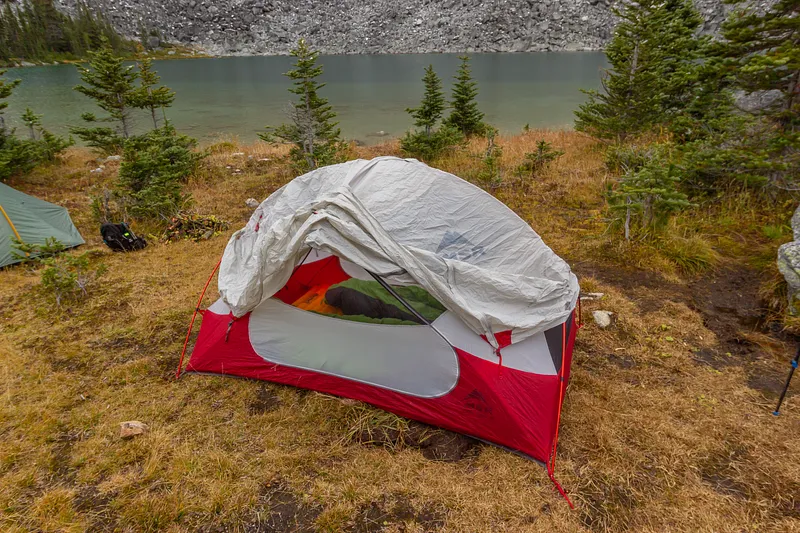
Venturing out into the great outdoors often means leaving the comfort of your home bed behind. But with the right gear, like a top-notch backpacking sleeping pad, you can bring a piece of that...
